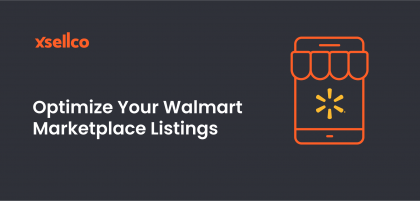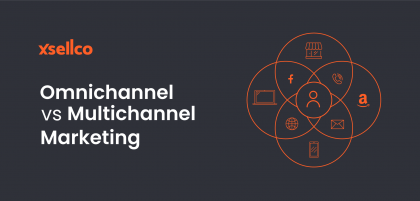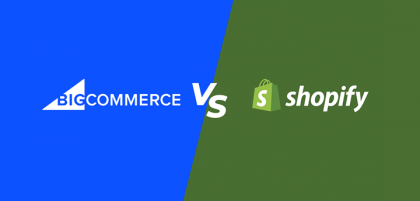Men’s grooming is having a moment. And this new fondness for full-on beards is proving a goldmine for The Modern Man.
The UK-based business sells everything from timeless classics to innovative brands with vintage-inspired packaging. xSellco chatted to John Thornton, The Modern Man’s content manager, about the company’s decision to take its business global.
xSellco: Eighty percent of The Modern Man’s sales are now international. Why did you decide that global expansion was the way to go?
John: Shaving and grooming is actually a hobby for a lot of people, which is why our business has been so successful in the UK. Over here, we have lots of older vintage shaving companies that sell products you can’t really get anywhere else. So for a modern company like us to make these products available online with a fresh take on old-fashioned grooming, it makes us quite unique. We became very successful in the UK purely because our products weren’t really available anywhere else and we soon realized that there was, in fact, a global market for our niche.
Figuring out what to sell online is hard.
Check out our free 12-page guide on finding, validating and sourcing the best products to sell on any marketplace.
Get the guide→
xSellco: What were the first steps in taking the business global?
John: We started exporting to France and Germany as a first step because they’re a bit closer in terms of shipping and logistics and they have the largest e-commerce markets in Europe. As a smaller company, international e-commerce is quite a big deal, so we wanted to take small steps before expanding to bigger markets like the U.S. Staying within Europe was a good way for us to gauge demand and fine-tune our logistics process before going further afield.
xSellco: What’s currently your main strategy for attracting global shoppers?
John: Google shopping is currently our main revenue driver. It works really well for us. With Google shopping we can literally list all of our products, and along with the right keyword research and listing optimization, it’s relatively easy to get your products found. It lets us make a stamp on the global markets without the heavy investment involved with branding, social media and so on.
We currently use a bid management software called Whoop—it’s an automated bid management software that allows us to set our minimum and maximum bids according to our budget. After the initial setup, which was done by one of the Whoop Adwords specialists, the software works well with only a little bit of manual tweaking here and there. We’ve seen a huge increase in our Google shopping success using it. If we wanted to really drill down into each market with a lot of spend, we would need someone dedicated to PPC (pay-per-click), but Whoop does most of the heavy lifting for us at the minute.
xSellco: Do you use Google shopping in all markets?
John: We pretty much use Google shopping wherever we can. At the minute we’re using it in 20 countries. However, there are certain regulations depending on where you sell. For example, in Germany you can submit a feed in English whereas in France you can’t, so we can’t use it there yet as our website isn’t translated. It’s worth making sure you know the regulations beforehand so you’re aware of which markets you can expect to drive revenue through Google ads.
xSellco: How do you deal with localization in your international e-commerce strategy?
John: We haven’t had our site translated yet, but we do plan on using Google translate very soon. I know this isn’t exactly ideal but it will keep costs down, as website translation is quite a large investment. It will still help to open doors into countries like France, where we can’t use Google shopping ads for right now.
xSellco: What international markets are currently driving most revenue?
John: For The Modern Man the U.S. is definitely our biggest market, but for our sister company Calissa, which sells woman’s beauty products, our main market is Australia—something we were actually very surprised about. I guess this shows the difference between men and women in their shopping habits and the brands they go to.
xSellco: What have been the biggest challenges in your international growth to date?
John: Customer service has been a huge challenge for us because of different time zones, leaving it difficult to keep up with response targets. Another big challenge would be currency management and trying to avoid as much loss as possible on exchange rates. At the minute we use World First and Currencies Direct. They have great exchange rates and extremely low commission costs, so we save as much as possible on currency exchange.
xSellco: Your products are quite small, so I guess shipping isn’t a huge worry.
John: Actually, before expanding outside of the UK, shipping was a massive worry for us. When we first started, you could either opt for basic untracked shipping for relatively cheap, or use DHL which was very expensive at the time but incredibly fast. There wasn’t really an option in the middle.
What we needed was a basic tracked service, so you don’t pay a fortune but it still offers a certain amount of security. When we were smaller and weren’t shipping such large quantities, we used to be a member of a local trade organization which enabled us to receive shipping discounts. You can usually check with your trade organization or with your different carriers to see if a specific organization is eligible for an association discount.
Now, as e-commerce is growing, we’ve seen a lot more competition in the logistics space, which is great. We now use three main services; basic postage which we offer as free on all order over 15 British pounds, a tracked service, and DHL for larger orders or express delivery. We use different carriers for different countries depending on the price, so it enables us to be really competitive. Our main carriers are DHL and Landmark for the mid-range tracked service. In the U.S., for example, the flexibility of our shipping allows us to compete alongside U.S.-based companies in terms of shipping costs and delivery times.
xSellco: You mentioned that you’re currently looking into expanding into Japan, which is a big step. What steps are you putting in place at the minute?
John: We hired a native Japanese speaker because this market doesn’t really allow for mistakes with language and cultural differences. Having someone native in-house allows us to offer a better service and make sure we’re doing things right. We’ve expanded the currencies on our website to cater to our Asian customers, so apart from that our main focus is on testing the water with different products and making decisions on our product portfolio for the Asian market. So far we’ve found our more premium products are a big hit, whereas the mid-range stuff hasn’t been successful.
As sales grow, we will most likely look into working with a partner company to help us in our expansion and make sure we’re on track with regulations. Working with a partner organization that specializes in Asian trade is also a great way to maximize your opportunities and stay on top of new developments.
xSellco: How are you currently testing product demand in the Japanese market?
John: I know Google isn’t the biggest search engine in Asia, but we’re currently using Whoop to test Google shopping ads. Getting a feel for which ads are performing well or not still gives us a really good sense for what is likely to drive sales on a bigger scale. We’re looking into setting up Yahoo Product Ads, but as we’re already up and running on Google, it’s a definitely good place to start.
Support all your customers, wherever they are, with an e-commerce help desk
Sign up for a free trial today. No credit card needed.








